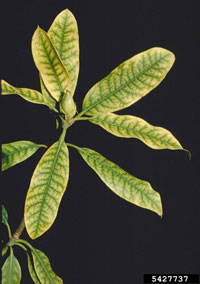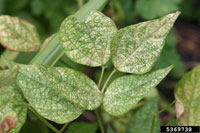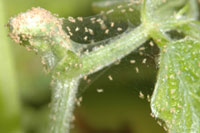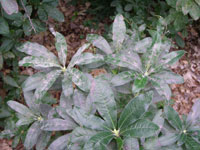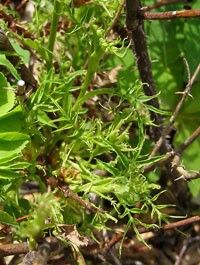Extension > Garden > Diagnose a problem > What's wrong with my plant? > Deciduous > Azalea/Rhododendron > Leaves discolored white, yellow, or pale green
Azalea/Rhododendron > Leaves > Leaves discolored white, yellow, or pale green
1 of 4
Iron chlorosis
- Leaves are yellow with prominent green veins
- Most evident on new growth
- May be sporadic throughout the plant
- In severe cases, new growth becomes white, stunted and dies
- Most common in alkaline soils or heavy clay soils
2 of 4
Two-spotted spider mite
Microsphaeria penicillata
- White to yellow stippling on foliage; leaves can be off-green
- Heavy infestations will cause leaves to turn white, yellow and ultimately grayish bronze; premature leaf drop may occur
- Webbing may be present, especially when heavily infested
- Mites usually appear in late June to August; they are more prevalent in hot, dry weather
- Adult spider mites are small (approximately 1/50 inch long) and are hard to see; they are yellow to dark red with dark spots (need magnification to see)
- More information on two-spotted spider mite
3 of 4
Powdery mildew
Microsphaeria penicillata
- White spots or blotches on leaves
- In severe cases leaves and young shoots may be completely covered with white powdery fungal growth
- Leaves may be stunted, curled or puckered
- More information on powdery mildew
4 of 4
Non-selective herbicide injury
(Round-up, Kleen-up, and other glyphosate products)
- Yellowing, wilting, browning leaves and eventual death of foliage and plants
- Damage usually appears first in new tissues
- Shrubs sprayed during the summer or fall may not have noticeable injury until the following season when leaves appear as stunted, narrow, strap-like, and chlorotic



